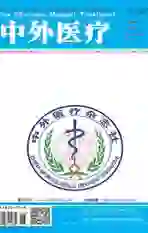心电图诊断高血压性心脏病的临床研究
2018-01-05袁燕勤
袁燕勤
[摘要] 目的 探讨通过心电图对高血压性心脏病进行诊断的临床价值。方法 随机选取该院2015年1月—2018年3月收治的高血压性心脏病患者82例,依据诊断方式差异分作两组,41例通过心电图展开诊断为心电组,41例于心电图诊断的同时予以超声诊断者为联合组,回顾性对比分析两组诊断过程与结果。结果 联合组阳性率是97.56%,较心电组的82.93%高(χ2=4.986,P=0.026);联合組对左房增大、左室肥厚、主动脉扩张、主动脉弹性减退、心律失常、ST-T改变的检出率均较心电组高(χ2=4.969、4.232、6.455、3.989、4.100、5.891,P=0.026、0.039、0.011、0.046、0.043、0.015)。结论 对于高血压性心脏病,通过心电图展开诊断效果理想,但于心电图检查结果上予以超声检查可使阳性检出率得以提升,进而达到提升确诊率的效果。
[关键词] 心电图;高血压性心脏病;诊断;效果
[中图分类号] R541 [文献标识码] A [文章编号] 1674-0742(2018)09(b)-0186-03
[Abstract] Objective To investigate the clinical value of electrocardiogram in the diagnosis of hypertensive heart disease. Methods A total of 82 patients with hypertensive heart disease admitted to the hospital from January 2015 to March 2018 were randomly selected. The diagnosis was divided into two groups according to the difference of diagnosis methods. 41 cases were diagnosed as ECG by electrocardiogram and 41 cases were diagnosed by electrocardiogram. At the same time, the ultrasound diagnosis was performed in the combined group, and the diagnostic process and results were analyzed retrospectively. Results The positive rate of the combined group was 97.56%, which was higher than that of the ECG group (82.93%) (χ2=4.986, P=0.026). The combined group had enlargement of the left atrium, left ventricular hypertrophy, aortic dilatation, aortic degeneration, and arrhythmia. The detection rate of ST-T changes was higher than that of ECG (χ2=4.969, 4.232, 6.455, 3.989, 4.100, 5.891, P=0.026, 0.039, 0.011, 0.046, 0.043, 0.015). Conclusion For hypertensive heart disease, the diagnosis by the electrocardiogram is ideal, but the ultrasound examination on the ECG results can improve the positive detection rate, and thus improve the diagnosis rate.
[Key words] Electrocardiogram; Hypertensive heart disease; Diagnosis; Effect
高血压属于现阶段常见慢性心血管疾病的一种,可对心、脑、肾等脏器造成损伤,近年来的发病率几率不断提升,且越来越年轻化[1]。在人体全身的供血系统中,心脏处于“发动机”的位置,而高血压可对动脉粥样造成损伤,使其发生动脉粥样硬化,致使患者心脏的结构、功能发生改变,即出现高血压性心脏病[2]。高血压性心脏病出现后,患者心功能严重下降,若不及时展开有效干预,可能会引发心力衰竭,导致患者死亡。而及时、有效的治疗需基于准确诊断,心电图、超声均为现阶段高血压性心脏病的主要诊断手段[3]。该次研究以该院2015年1月—2018年3月收治的82例高血压性心脏病患者为对象,分成两组后分别通过不同方法展开诊断,旨在进一步对此病诊断中心电图的应用价值进行探讨,现报道如下。
1 资料与方法
1.1 一般资料
该次研究随机选取病例82例,均为患高血压性心脏病并在该院接受治疗的患者,病例的纳入与排除符合以下标准:①纳入明确确诊为高血压性心脏病者;②纳入有完整的病例资料者;③纳入已配合对知情同意书进行签署者;④排除合并可能会对心功能造成影响的疾病者;⑤排除合并其他严重器官、系统疾病者;⑥排除存在心脏手术史者;⑦排除对检查配合不佳者。依据诊断方式差异,将82例患者分作两组,心电图41例,性别:男23例(56.10%),女18例(43.90%);年龄:40~80岁,平均(60.13±8.74)岁。联合组41例,性别:男25例(60.98%),女16例(39.02%);年龄:40~80岁,平均(61.21±7.85)岁。该次研究已通过该院医学伦理会审批,且两组上述信息统计学分析结果显示,差异无统计学意义(P>0.05),可对比。
